1.
Introduction
The globalization of financial markets has been developing rapidly, which requires more on credit risk management. Credit risk, which is attracting more and more attention from people in academics and practices, refers to not only default risk but also credit rating migration risk. The credit rating migration risk is playing a more and more significant role in financial markets and risk management, especially after the outbreak and spread of 2008 financial crisis. In particular, the credit rating migration risk makes difference to the corporate bond pricing.
There are two traditional models for default risk, involving the structural models and reduced form models. In the reduced form models, the default event is depicted and captured by introducing an exogenous variant. The default time is modeled by a stochastic default intensity in this approach, see [7,14,17] and so forth. The assumption on the structural models is that if the below bound of some insolvency threshold is met by corporate value, default occurs. In the model proposed by Merton [28], a default event may only occur at the maturity. Subsequently, Black and Cox [2] extended Merton's model to a first-passage-time model, where default may occur at any time before the debt maturity, see also [1,3,18,25] and so forth.
With regard to literatures working on credit rating migration, a commonly adopted approach is the Markov chain, which is captured by transition intensity matrix coming from general statistic data, see [5,8,9] and so forth. The framework of reduced form then can be directly developed for dynamic credit rating migration process, see [6,15,30] and so forth. However, the Markov chain ignores the role played by the corporate value when modelling credit rating migration. In fact, the corporate value is an important factor in the credit rating migration and should be taken into consideration. Accordingly, from the corporate perspective, Liang et al. [20] started to model and analyze credit rating migration risk by structural model based on Merton's model. They set a predetermined migration threshold to divide the corporate value into high and low rating regions, where the corporate value follows different stochastic processes. However in practice, the threshold dividing credit ratings is usually not predetermined. To solve this problem, Hu et al. [11] improved the model proposed by Liang et al. [20]. They determined the migration boundary by the dynamic proportion between corporate debt and corporate value, which results in a free boundary problem. Subsequently, Liang et al. [21] incorporated a risk discount factor, which measures the sensibility of credit rating migration to the proportion, into the model and showed that an asymptotic traveling wave solution exists in the free boundary problem. Problem on credit rating migration in switching macro regions can also be referred to Wu and Liang [36], while credit contingent interest rate swap with credit rating migration can be seen in Liang and Zou [23].
In particular, the aforementioned works [11,20,21,23,36] only take two credit ratings into consideration in credit rating migration problem. The credit region is divided into the high rating region and the low rating region, which results in only one free boundary in the corresponding free boundary problem. However, in practice, we should notice that there are usually more than two credit ratings used when accessing the corporate credit levels. The Standard & Poor's, an international rating agency, downgraded the long-term sovereign credit rating of Greece from A- to BBB+ on the evening of December 16, 2009. This verifies the fact and inspires us to consider multiple credit ratings in migration problems. Wu and Liang [34] provided some numeric results for multiple credit rating migration problem. Wang et al. [32] presented some theoretical results by showing that the asymptotic traveling wave solution obtained in Liang et al. [21] persists in the free boundary problem with multiple free boundaries. By considering stochastic interest rate in reality [19,24,29], Yin et al. [37] improved the model by replacing the constant interest rate with a stochastic version. This improved model covers the previous works where only two credit ratings are involved with an interest-dependent volatility [22] or multiple credit ratings migration with constant interest rate [32,34]. Then Huang et al. [12] continued to study the bond pricing model with multiple credit rating migration and stochastic interest rate. They contributed to establishing the asymptotic traveling wave solution in the time-heterogeneous free boundary problem with multiple free boundaries.
The aforementioned models for credit rating migration in the structure framework are based on the Merton's model, i.e., default may only occur at the maturity. However, in practice, default may occur at any time up to maturity [4,26,31]. Wu et al. [35] relaxed the default restriction in the credit rating migration model by setting a predetermined threshold capturing the first-passage time when the default occurs. Once the corporate value falls below the threshold at any time, the default occurs. This results in a free boundary problem subject to a new boundary condition. Again we have to notice that the credit region in their credit rating migration model pricing a defaultable corporate bond is still divided into the high and low rating regions and meanwhile, a constant interest rate is also considered. Hence, motivated by these existing works on the effect of credit rating migration risk when valuating a corporate bond, in this paper, we devote to studying a pricing model for a defaultable corporate bond with both multiple credit rating migration risk and stochastic interest rate. Our work extends the existing works [12,37], where the multiplicity of credit rating and stochasticity of interest rate are involved in their models, by inserting the default risk. Meanwhile, we improve the results of Wu et al. [35], who considered default risk in pricing the corporate bond with only one credit rating migration boundary and constant interest rate, to fit the effects of multiple credit ratings and stochastic interest rate.
The difficulties in analysis are generated from the joint effects and mutual restrictions among the multiplicity of credit ratings, stochastic volatility of interest rate and presence of default boundary. Besides that the free boundary problem turns into a initial-boundary problem, in particular, it is perplexed by not only a time-dependent and discontinuous coefficient but also a time-dependent process arisen in the problem. In addition to an irreducible barrier boundary, these indeed cause some troubles in deriving necessary estimates and then proving the existence and uniqueness of solution to the free boundary problem. Another contribution is the asymptotic behavior of solution to the free boundary problem. We prove that the solution converges to some steady status, which is the spatially homogeneous solution of an auxiliary free boundary problem, whose coefficients are the long time limits of the time-dependent coefficients in the original free boundary problem. This convergence, which shows us the developing tendency of solution, is established by two steps. In the first step, it is shown that the solution of the original free boundary problem converges to the solution of the auxiliary free boundary problem with time tending to infinity, while in the second step, it is shown that the solution of the auxiliary free boundary problem converges to the steady status. Moreover, the steady status can be solved explicitly. Thus, we present an explicit formula to valuate the defaultable corporate bond with multiple credit rating migration risk and stochastic volatility of interest rate.
The paper is organized as follows. In Section 2, the pricing model is constructed. In Section 3, the model is reduced into a free boundary problem with initial condition and boundary conditions involving default boundary and migrating boundaries. In Section 4, an approximated free boundary problem is analyzed and some preliminary lemmas for uniform estimates are collected. In Section 5, through the approximated free boundary problem, the existence and uniqueness of solution to the free boundary problem are obtained. In Section 6, it is proved that the solution is convergent to a steady status by a Lyapunov argument. Then we conclude the paper by presenting an explicit pricing formula for the defaultable corporate bond in Section 7.
2.
The baseline pricing model
In this section, we set up the baseline pricing model for a defaultable corporate bond subject to multiple credit rating migration risk and stochastic interest rate. Some necessary assumptions are put forward as follows.
2.1. Assumptions
Let (Ω,F,P) be a complete probability space. Suppose that the corporation issues a defaultable bond, which is a contingent claim of its value on the space (Ω,F,P).
Let S denote the corporate value in the risk neutral world. It satisfies the Black-Scholes model
where r is the time-varying interest rate and σ is the heterogeneous volatility with respect to credit ratings. Wt is the Brownian motion generating the filtration {Ft}. The credit is divided into n ratings. In different credit ratings, the corporation shows different volatilities of its value. We denote the volatility in the i'th rating by σ(t)=σi, i=1,2,⋯,n, and in addition, they satisfy
which means that in the highest credit rating, the corporation shows the smallest volatility σ1 and in the lowest credit rating, it shows the largest volatility σn. The stochastic interest rate r is supposed to satisfy the Vasicek model [27,33]
which is widely popular in financial application, where the parameters a, θ, σr are supposed to be positive constants in this paper. σr is the volatility of the interest rate. θ is considered as the central location or the long-term value. a determines the speed of adjustment.
We suppose that the corporation issues only one defaultable bond with face value F. The effect of corporate value on the bond value is focused on and the discount value of bond is considered. Denote by ϕt the discount value of bond at time t. The corporation exhibits two risks, the default risk and credit rating migration risk. The corporation can default before maturity time T. The default time τd is the first moment when the corporate value falls below the threshold K, namely that
where K<F⋅D(t,T), where 0<D(t,T)<1 is the discount function. Once the corporation defaults, the investors will get what is left. Hence, ϕt(K)=K and at the maturity time T, the investors can get ϕT=min{ST,F}. On the other hand, the credit regions are determined by the leverage γ(t)=ϕt/St. Denote the thresholds of leverage γ(t) by γi, i=1,2,⋯,n−1, and they satisfy
The credit rating migration times are the first moments when the corporate credit rating is upgraded or downgraded. They are defined as follows:
τ1 is the first moment that the corporation degrades from the highest credit rating. τn is the first moment that the corporation upgrades from the lowest credit rating. τi,i+1 is the first moment that the corporation jumps up into the i+1'th credit rating from the i'th credit rating, while τi,i−1 is the first moment that the corporation jumps down into the i−1'th credit rating from the i'th credit rating.
2.2. Cash flow
Once the credit rating migrates before the maturity T, a virtual substitute termination happens, namely that the bond is virtually terminated and substituted by a new one with a new credit rating [35]. Thus, there is a virtual cash flow of the bond. Denote the bond values in different credit ratings by ϕi(t,S), i=1,2,⋯,n. Then they are the conditional expectations as follows
where
and for i=2,3,⋯,n−1,
where
and
where
where χ is the indicative function, satisfying χ=1 if the event happens and otherwise, χ=0.
2.3. PDE problem
Suppose that the correlation between the interest rate and the corporate value is given by dWrt⋅dWt=ρt, −1≤ρ≤1. By the Feynman-Kac formula, we can derive that ϕi, i=1,2,⋯,n, are functions of time t, interest rate r and value S. They satisfy the following PDE in their regions
and for i=2,3,⋯,n−1,
and
with terminal conditions
and boundary condition
The bond value is continuous when it passes a rating threshold, i.e., ϕi=ϕi+1 on the rating migration boundaries, where i=1,2,⋯,n−1. Also, if we construct a risk free portfolio π by longing a bond and shorting Δ amount asset value S, i.e., π=ϕ−ΔS and such that dπ=rπ, this portfolio is also continuous when it passes the rating migration boundaries, namely that πi=πi+1 or Δi=Δi+1 on the rating migration boundaries, where i=1,2,⋯,n−1. By Black-Scholes theory [16], it is equivalent to
Denote by P(t,r) the value of a guaranteed zero-coupon bond with face value 1 at the maturity t=T, where the interest rate follows the Vasicek model. By the Feynman-Kac formula, P(t,r) satisfies the following PDE
with terminal condition P(T,r)=1, whose explicit solution is solved as P(t,r)=eA(T−t) [13], where
and
Take transformations
Then ψi, i=1,2,⋯,n satisfy
and for i=2,3,⋯,n−1,
and
where
The terminal conditions are given as
and the boundary conditions are
and
for i=1,2,⋯,n−1.
3.
Free boundary problem
We introduce the standard transformation of variable x=logy, remaining T−t as t, and define
Using (2.12), we drive the following equation from (2.7)-(2.9) as
where ˆσ=ˆσ1 as φ<γ1, ˆσ=ˆσi as γi−1<φ<γi for i=1,2,⋯,n−1, ˆσ=ˆσn as φ>γn−1,
Meanwhile denote by
the limits of ˆσ2i(t) as time tends to infinity, i=1,2,⋯,n. Without loss of generality, suppose that F=1 and there holds K<1. Then (3.1) is supplemented with the initial condition
and boundary condition
where s(t)=logK−A(t). Take u(t,x)=φ(t,x+s(t)). Then u satisfies
where
and ˆσ=ˆσ1 as u<γ1, ˆσ=ˆσi as γi−1<u<γi for i=1,2,⋯,n−1, ˆσ=ˆσn as u>γn−1, with the initial condition
and boundary condition
The domain will be divided into n rating regions Qi, i=1,2,⋯,n. We will prove that the domain can be separated by n−1 free boundaries x=λi(t), i=1,2,⋯,n−1. These boundaries are a prior unknown since they should be solved by equations
where u is also a priori unknown. Since we have assumed that (3.1) is valid cross the free boundaries, (2.12) implies that for i=1,2,⋯,n−1,
In the work [35] and [12], where the former model is subject to constant interest rate and the later one is subject to stochastic interest rate but without default boundary, the process ˙s(t) in (3.6) is replaced by a constant. The presence of ˙s(t) indeed leads to some technical differences in deriving the estimates in the following argument. We can rewrite the formula of ˙s(t) as
where
It is not difficult to analyze and derive that one of the following conditions holds, then there holds ˙s(t)≥0:
or
or
4.
Approximated problem with some uniform estimates
4.1. Approximation
Let H(ξ) be the Heaviside function, namely that H(ξ)=0 for ξ<0 and H(ξ)=1 for ξ≥0. Then we can rewrite the volatility ˆσ in (3.6) as
We approximate H(ξ) by a C∞ function Hϵ(ξ) satisfying
Consider the approximated free boundary problem
with initial condition
and
where
Problem (4.1)-(4.3) admits a unique classical solution uϵ. Now we proceed to derive some estimates for uϵ.
4.2. Estimates for approximated problem
Some uniform estimates are presented in this section, which are sufficient to obtain the existence and uniqueness of solution to problem (3.6)-(3.10).
Lemma 4.1. Let uϵ be the solution of problem (4.1)-(4.3). Suppose that one of the conditions (3.11)-(3.13) holds. Then there holds
Proof. It is easy to verify that 0 is the lower solution of uϵ and meanwhile, e−(x+logK) and 1 are upper solutions. The result is a direct application of comparison principle.
Lemma 4.2. Let uϵ be the solution of problem (4.1)-(4.3). Then there exists a constant C>0, independent of ϵ, such that
Proof. It is easy to see that ˆσ2ϵ can be written as
Differentiating (4.1) with respect to x gives
It is known that ∂uϵ∂x(0,x)=0 for 0<x<−logK and ∂uϵ∂x(0,x)=−e−(x+logK)≤0 for x>−logK. Since
then letting x→0, it holds that ∂uϵ∂x(t,0)≤0. Thus it follows by maximum principle that there holds ∂uϵ∂x≤0.
On the other hand, since ˙s(t) is uniformly bounded, take an appropriate value C>0, such that
Clearly, e−Cx|x=0=1 and e−Cx≤min{1,e−(x+logK)} for C sufficiently large. Then there hold uϵ(t,x)≥e−Cx and
Letting x→0, we have ∂uϵ∂x(t,0)≥−C. Clearly, there holds
as ˆσ2i+1>ˆσ2i for i=1,2,⋯,n−1. It follows by the comparison principle that there holds ∂uϵ∂x≥−C.
Lemma 4.3. Let uϵ be the solution of problem (4.1)-(4.3). Suppose that one of the conditions (3.11)-(3.13) holds. Then there exist constants C1, C2, C3 and C4, independent of ϵ, such that
Proof. Differentiating (4.1) with respect to t gives
where
Since
where
and
we can write
According to the formulas of ˆσ2i, i=1,2,⋯,n, we have h1(t)≤∂ˆσ2n∂t. On the other hand, there exists ˜λϵi(t) such that H′ϵ(uϵ(t,˜λϵi(t))−γi) attains its maximum and
Denote by y(t) the solution of the following ODE
where the constant C is given as the one in Lemma 4.2. At x=−logK, ∂2uϵ∂x2(0,x) produces a Dirac measure of density −1. Thus ∂uϵ∂t(0,x)≤0 in the distribution sense. In addition, since the second order compatibility condition is satisfied at (0,0), we have ∂uϵ∂t is continuous at (0,0). Meanwhile, ∂uϵ∂t(0,t)=0. By further approximating the initial data with smooth function if necessary, there holds by the comparison principle that
if we set y0=0. The ODE (4.5) can be solved formally as
where
and
Since ∂ˆσ2n∂t→0 as t→∞ and H′ϵ converges to the Dirac measure as ϵ→0, this implies that exp(∫t0p(s)ds) is uniformly bounded with respect to t. With regard to q(t), in addition to ¨s(t)→0 as t→∞, it is known that q(t) is also uniformly bounded. Hence, we conclude that y(t) is uniformly bounded with respect to t.
On the other hand, since uϵ(0,0)=1>γn−1, and by Hölder continuity of solution, there exists a ρ>0, independent of ϵ, such that
for |x|≤ρ, 0≤t≤ρ2. Thus for sufficiently small ϵ<12(1−γn−1), ˆσϵ=ˆσn for |x+logK|≤ρ, 0≤t≤ρ2. It follows from the standard parabolic estimates [10] that
for |x+logK|<ρ2, 0<t≤ρ24. Note that (4.4) can be rewritten as
As ˙s(t) is uniformly bounded, we take a sufficiently large constant C3 such that C3≥supt≥0|˙s(t)|C, where constant C is the one given in Lemma 4.2. Then if ∂uϵ∂t<−C3, there holds
Denote by z(t) the solution of the following ODE
which can be solved as
where
As ∂ˆσ2n∂t and ¨s(t) tends to 0 as t→∞, z(t) is uniformly bounded. Moreover, z(t) is also decreasing if z0≤0. Take the initial data |z0| and constant C3 sufficiently large such that
on the boundary
We claim that the region
is an empty set. If not, on the parabolic boundary of this region, we clearly have ∂uϵ∂t≥−C3, which implies by the comparison principle that
in this region. This is a contradiction.
Remark 4.4. In the work [35], it was proved that ∂uϵ∂t≤0, which is different from the result shown in Lemma 4.3. However, although we get a similar result to Lemma 5.4 in [12], the proof is very different and more technical. This is due to the joint effect of stochastic interest rate and default boundary.
Corollary 4.5. Let uϵ be the solution of problem (4.1)-(4.3). Suppose that one of the conditions (3.11)-(3.13) holds. Then there exist constants C1, C2, C3 and C4, independents of ϵ, such that
Denote by λϵi, i=1,2,⋯,n−1 the approximated free boundaries, which are the solutions of equations
Then we have the following estimates for the approximated free boundaries.
Lemma 4.6. Let λϵi, i=1,2,⋯,n−1, be the approximated free boundaries defined in (4.6). Suppose that one of the conditions (3.11)-(3.13) holds. Then there exist constants C1, C2, independent of ϵ, such that
Proof. Since
which implies that λϵi(t)≥λϵi+1(t) by Lemma 4.2. From Lemma 4.1, we have
which implies that
This means that region {x>−logγ1K} is in the highest rating region and hence
Denote by m=supt≥0˙s(t) and
Then v(0)=12(1+γn−1)<1=uϵ(t,0). We can see that v(x)≤v(0)<1 and
which implies that
In addition, we have
By the comparison principle, we have v(x)≤uϵ(t,x), which implies that
for
This means that region {x<C1} is in the lowest rating region and hence λϵn−1(t)≥C1.
Lemma 4.7. Let λϵi, i=1,2,⋯,n−1, be the approximated free boundaries defined in (4.6). Suppose that one of the conditions (3.11)-(3.13) holds. Then there exists constant C independent of ϵ, such that
Proof. Clearly, there holds
Since λϵi(0)=−logγi−logK, i=1,2,⋯,n−1, by Lemma 4.3, there is a constant ρ>0 independent of ϵ such that
It follows from Lemma 4.3 that
where C0 is a constant independent of ϵ. To finish the proof, it is sufficient to prove that
for some positive constant C∗ independent of ϵ. As shown in Lemma 4.2, we have
In addition, there also holds −∂uϵ∂x(0,x)=0 for 0<x<−logK and −∂uϵ∂x(0,x)=e−(x+logK) for x>−logK, and −∂uϵ∂x(t,0)≥0 for t>0. By Lemmas 4.3 and 4.6, there exists constant R>0 independent of ϵ, such that
and
Consider the region
The parabolic boundary of this region Ω∗ consists of five line segments. On the initial line segment {t=0,ρ2−logK≤x≤R}, there holds that −∂uϵ∂x(0,x)=e−(x+logK). The remaining four parabolic boundaries {0≤t≤T,x=R}∪{0≤t≤ρ2,x=ρ2−logK}∪{t=ρ2,1R≤x≤ρ2−logK}∪{ρ2≤t≤T,x=1R} are completely and uniformly within the highest or lowest rating region (independent of ϵ). Thus by compactness and the strong maximum principle, on these four boundaries, it holds that −∂uϵ∂x≥ˉC>0 for some ˉC independent of ϵ. It follows that
which completes the proof of the lemma.
5.
Existence and uniqueness
Lemmas 4.1-4.3 and Corollary 4.5 provide uniform estimates for approximated solution uϵ. By taking a limit ϵ→0 (along a subsequence if necessary), we derive the existence of solution to problem (3.6)-(3.10). Lemmas 4.6-4.7 show that there are uniform estimates in C1([0,T]) for the approximated free boundaries λϵi, i=1,2,⋯,n−1. Therefore, the limits of λϵi as ϵ→0 exist, which are denoted by λi, i=1,2,⋯,n−1. These λi, i=1,2,⋯,n−1, are the free boundaries of the original problem.
Theorem 5.1. The free boundary problem (3.6)-(3.10) admits a solution (u,λi,i=1,2,⋯,n−1) with
for any t0>0, where
and λi∈W1([0,T]), i=1,2,⋯,n−1.
By the classical parabolic theory, it is also clear that the solution is in ∩ni=1C∞(Ωi), where
and for i=2,3,⋯,n−1
and
Now we prove the uniqueness of solution to the problem (3.6)-(3.10).
Theorem 5.2. The solution (u,λi,i=1,2,⋯,n−1) of the problem (3.6)-(3.10) with
and λi∈C([0,T]) is unique.
Proof. Suppose that (u,λi,i=1,2,⋯,n−1) and (˜u,˜λi,i=1,2,⋯,n−1) are two solutions of the problem (3.6)-(3.10). Then u(t,λi(t))=˜u(t,˜λi(t))=γi, i=1,2,⋯,n−1 and
Besides, at t=0, λi(0)=˜λi(0)=−logK−logγi, i=1,2,⋯,n−1. As shown in Lemma 4.7, there exists a constant C∗>0, such that ux<−C∗ and ˜ux<−C∗ on the region Ω∗ defined by (4.7). Then by the implicit function theorem, there exists ρ>0, such that when 0<t<ρ,
where C is a positive constant, whose value may change line on line but makes no difference. Let w=u−˜u and denote by ˆσ and ˜ˆσ the corresponding coefficients, then w satisfies
u, ˜u and their derivatives decay exponentially fast to 0 as x→∞. Multiplying (5.2) by w on both sides and integrating x from 0 to ∞ gives
Since
and ∂˜u∂t and ∂˜u∂x are uniformly bounded outside the region ¯Qt0, we conclude that they are bounded for x∈∪n−1i=1[λi(t)∧˜λi(t),λi(t)∨˜λi(t)]. Since w decays exponentially to 0 as x→∞, for any t>0, there exists x0<∞ such that
Take
for some x∗∈(x0,x0+ϵ). Then there holds
It follows that
We now proceed to estimate the left side of (5.3). First, we have
where
and
Second, we have
and
as ˙s(t) is uniformly bounded. Combining the above inequalities (5.5)-(5.8), taking into account (5.3), we drive
It is easy to see that there exists a constant C0>0 such that
Then for sufficiently small ϵ, by applying the Gronwall's inequality, we conclude that w≡0. This proves the uniqueness for 0≤t≤ρ. A close examination of the proof indicates that the uniqueness result can be extended to any time interval, where ∂u∂x is strictly negative, which is already verified in (4.8).
6.
Asymptotic behavior
6.1. Steady status
Denote by ψ the solution of the following static problem
with boundary conditions
where ˉˆσ=ˉˆσ1 as ψ<γ1, ˉˆσ=ˉˆσi as γi−1<ψ<γi for i=1,2,⋯,n−1, ˉˆσ=ˉˆσn as ψ>γn−1, and ˉˆσi, i=1,2,⋯,n, are given in (3.3). We suppose that in the i'th rating region, ψ admits the following form
where pi, qi and ki are undetermined constants. Substituting (6.4) into (6.1) in the corresponding rating region gives
As it is supposed that one of the conditions (3.11)-(3.13) holds, then ˙s(t)≥0, which implies that ki<0, i=1,2,⋯,n. Substituting (6.4) into the boundary condition (6.3) gives
and
for i=1,2,⋯,n−1. Also, substituting (6.4) into the boundary condition (6.2) gives
It is easy to see that coefficient system (6.5)-(6.8) can be equivalently rewritten as
for i=1,2,⋯,n−1, and
For i=1,2,⋯,n−2, from the equations
we can derive their relationship as
Thus, denote by xi=logqi for i=1,2,⋯,n, yi=log(γi−pi) for i=1,2,⋯,n−1 and yn=log(1−pn), zi=log(γi−pi+1), i=1,2,⋯,n−1. Then (6.9)-(6.12) can be rewritten as
where a virtual parameter λ∗n is added. (6.13)-(6.17) is a linearized system from (6.5)-(6.8) and can be solved according to fundamental linear algebra theory. Thus, we obtain the explicit solution of the static problem (6.1)-(6.3).
6.2. Convergence
The coefficients in the model of [35] are time-homogeneous and moreover, the solution is decreasing in time. However, both of these are not the cases in our model. We cannot take advantage of the decreasing property of solution to obtain the convergence. In this paper, we are motivated by the idea of [12] and obtain the convergence by two steps. The first step is to show that the solution of problem (3.6)-(3.10) converges to the solution of some auxiliary problem defined below, while in the second step, we show that the solution of auxiliary problem converges to the solution of static problem (6.1)-(6.3). Now define an auxiliary free boundary problem as follows
with initial condition ˉu0 and boundary condition ˉu(t,0)=1,
All the results derived above involving the existence, uniqueness and some properties of solution presented in Lemmas 4.1-4.6 hold for solution of problem (6.18)-(6.19). We have to notice that as the presence of default boundary, although we follow the idea of [12], the technical proofs are different, especially in the step, i.e., the convergence from the original solution to the auxiliary solution.
6.2.1. Convergence from u to ˉu
Since ˆσi(t)→ˉˆσi, i=1,2,⋯,n, and ˙s(t)→θ−σ2r2a2 as t→∞, then for any ϵ>0, there exists a T>0 such that for t≥T,
Let ˉu0(x)=u(T,x) and denote by uT(t,x)=u(t+T,x) for t≥0. We have uT(t,λi(t))=ˉu(t,ˉλi(t))=γi, i=1,2,⋯,n−1, and
where λTi(t)=λi(t+T), i=1,2,⋯,n−1. Similarly to the proof of Theorem 5.2, by the implicit function theorem, there exists a ρ>0, such that when 0<t<ρ,
where C is a positive constant, whose value may change line on line but makes no difference. Let w=uT−ˉu. Then w satisfies
where ˙sT(t)=˙s(t+T),
and
As u, ˉu and their derivatives decay exponentially fast to 0 as x→∞, multiplying (6.22) by w on both sides and integrating x from 0 to ∞ gives
By Lemmas 4.2 and 4.3, we know that ∂ˉu∂t and ∂ˉu∂x are uniformly bounded as the initial data is set to be ˉu0(x)=u(T,x) for a sufficiently large T. It follows that
where
hold by (6.20) and the exponential decay of w. Using (5.4), there holds
On the other hand, there holds
We now proceed to estimate the left side of (6.23) by
where
and
The remaining terms in (6.23) can be estimated by
and
Combining the inequalities (6.24)-(6.28), we have
It follows that
Then taking a sufficiently small ϵ, which means a sufficiently large T, by applying the Gronwall's inequality, we conclude that w=0, namely that uT(t,x)=ˉu(t,x) for 0≤t≤ρ. The result can be extended to any interval of t.
6.2.2. Convergence from ˉu to ψ
The convergence from the solution of auxiliary problem (6.18)-(6.19) to the solution of problem (6.1)-(6.3) is proved by a Lyapunov argument, which is similar to the procedure in [12,21,32], but with some necessary modifications to fit the model in this paper. For instance, we have extend the solution with domain [0,∞) to the whole real line. The first step is to present the formal construction of a Lyapunov function, ignoring the integrability of any arisen integral. The second step is to verify the integrability of those integrals arisen in the formal construction. The third step is to complete the proof of convergence.
Denote by ˉU the extension of ˉu, who is the solution of auxiliary problem (6.18)-(6.19), from x∈[0,∞) to the real line R, namely that
Following [12], let V(x,u,q) be a undetermined function and set
Formally, assuming the integrability, we also have
where δ=θ−σ2r2a2, provided taking V satisfying
Denote by ρ=Vqq. Suppose that V(x,u,0)=Vq(x,u,0)=0 as in [12]. Then we have
It follows that
and
Then (6.29) can be written as
To ensure (6.29) holds, it should be
Formally, denote by v the solution of the following equation
with boundary conditions
Then by (6.30) and (6.31), there holds
which can be solved as
Replacing x0 by x, u0 by u and q0 by q, we have
Integrating the Lyapunov function and assuming E(t)≥0, we have
Following the formal construction, we proceed to the second step, namely that verify the integrability of those integrals arisen in the formal construction of the Lyapunov function. As indicated by Liang et al. [21], there are two problems, where the first one is that ρ grows exponentially as x→±∞, while the second one is that the coefficient in (6.31) is discontinuous and the theory of ODE cannot be applied directly. These two problems will be overcame through the approximated solution of problem (4.1)-(4.3) with all the uniform estimates. We begin this step by defining
for R>0, where ˉUϵ is the approximation of ˉU with the coefficient of the approximated problem given as
and Vϵ satisfies
and ρϵ is defined by (6.32) with ˉˆσ2 replaced by ˉˆσ2ϵ. Thus, (6.31) can be solved on the real line x\in\mathbb{R} and V_{\epsilon} is well defined. Meanwhile, it also satisfies
Then we have
Lemma 6.1. Let \bar{u}_{\epsilon} be the approximated solution of problem (6.18)-(6.19). Then for any K_{1} > 0 , there exist constants C_{0} , K_{2} > 0 such that for x > C_{2} , there holds
where C_{2} is the constant given in Lemma 4.5.
Proof. We know that for x > C_{2}
where the operator
By Lemmas 4.2 and 4.3, it has been shown that
for some C > 0 . On the other hand, there holds
for x > C_{2} . Then for any K_{1} > 0 , there exist constants C_{0} , K_{2} > 0 such that
and C_{0}\geq C , C_{0}e^{-K_{1}x}\geq(\delta\vee1)e^{-(x+\log K)} , which implies that
for x > C_{2} .
From the formula of \rho_{\epsilon}
we have
which also clearly implies that
and
for x > 0 . Thus by Lemma 6.1, we can choose K_{1} > 1+\frac{2\delta}{\bar{\hat{\sigma}}_{1}^{2}} such that
and
Then there holds
where the constant C is independent of \epsilon , which implies that
according to (6.28) and the setting of \bar{U} .
Now we arrive at the third step, completing the proof of convergence from \bar{u} to \psi . Denote by \bar{u}_{m}(t, x) = \bar{u}(t+m, x) and consider \bar{u}_{m} as a sequence of functions on [0, 1]\times(0, \infty) . Since \bar{u}_{m} is a bounded sequence in W^{1, 2}_{\infty}([0, 1]\times(0, \infty)) , we derive by the embedding theorem that there exists a subsequence m_{j} of m and a function \tilde{\psi} such that as m_{j}\rightarrow\infty , there holds
for any R > 1 . Furthermore, by taking a further subsequence if necessary, there holds that
and thus
for some constant C > 0 . As (6.34) suggests that
we have
which implies that \tilde{\psi}_{t}\equiv0 and \tilde{\psi} is independent of t and only depends on x . Now we proceed to prove that \tilde{\psi} satisfies (6.1). Take a test function f\in C_{c}^{\infty}(0, \infty) , then there holds
Clearly, the second term on the right side converges to the corresponding integral of \tilde{\psi} as m = m_{j}\rightarrow\infty . With regard to the first term on the right side of (6.36), there holds
By the weak-star convergence, the first term on the right side of (6.32) converges to the corresponding integral of \tilde{\psi} . The second term on the right side of (6.37) is bounded by C\int_{0}^{\infty}|\bar{\hat{\sigma}}^{2}(\bar{u}_{m})-\bar{\hat{\sigma}}^{2}(\tilde{\psi})|fdx , which converges to 0 by the dominated convergence theorem. By the convergence (6.35), we have
Thus integrating (6.36) with respect to t over [0, 1] and letting m\rightarrow\infty , there holds
It follows that \tilde{\psi} satisfies (6.1). The convergence (6.35) also suggests that \tilde{\psi} satisfies (6.2). Now suppose that
We choose t_{i, j}^{min} , t_{i, j}^{max}\in[0, 1] such that
Taking the subsequences along which the liminf and limsup in (6.38) are attained, together with the boundary conditions
and (6.35), it is deduced that
However, by the uniqueness of solution to static problem (6.1)-(6.3), there should hold
and \psi\equiv\tilde{\psi} . In addition, the uniqueness implies that all subsequences limit should be uniform and thus the full sequence must converge as m\rightarrow\infty .
7.
Conclusion
In this paper, we study a free boundary problem for pricing a defaultable corporate bond with multiple credit rating migration risk and stochastic interest rate. By using PDE techniques, the existence, uniqueness some regularities of solution are obtained to support the rationality of the model to pricing a defaultable corporate bond. In [35], it is shown that the solution and rating boundaries of the free boundary problem pricing a defaultable corporate bond with constant interest rate are all decreasing with respect to time, which do not hold any more in our model with stochastic interest rate, as the coefficients of model are all time heterogeneous. Furthermore, we present the asymptotic behavior of solution to this pricing model. Asymptotic behaviors of solution to free boundary problems pricing corporate bonds with credit rating migration risk have been analyzed in [12,21,32]. The asymptotic solution of the model with only one migration boundary can be solved explicitly [21], while in the works [12,32], where the models are subject to multiple migration boundaries, it is not the case. However, interestingly, in this paper, although our model is also subject to multiple migration boundaries, it is proved that the asymptotic solution can be solved explicitly. We conclude that if the maturity T is sufficiently large, we can valuate the defaultable corporate bond with multiple credit rating migration risk and stochastic interest rate by an explicit pricing formula as follows:
where S(t) is the corporate value, K is default threshold and \psi is the steady status given in Section 6, whose explicit form can be obtained by solving the linear algebraic equation set.
Acknowledgments
This work was supported by the National Natural Science Foundation of China (No. 11701115).
Conflict of interest
All authors declare no conflict of interest.











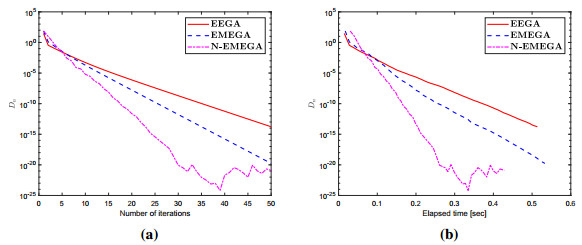
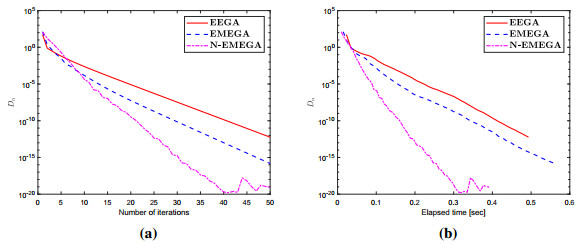
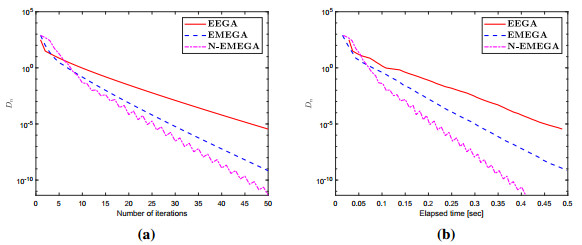

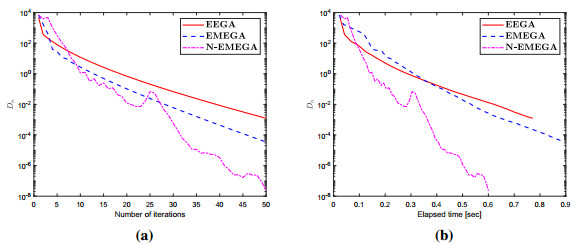
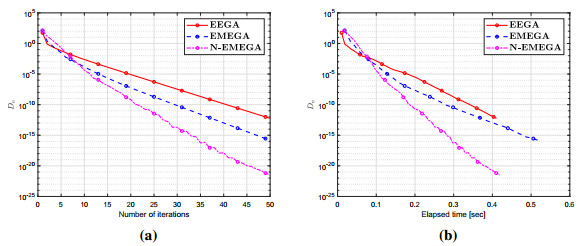

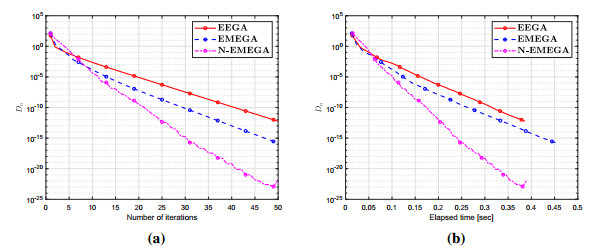
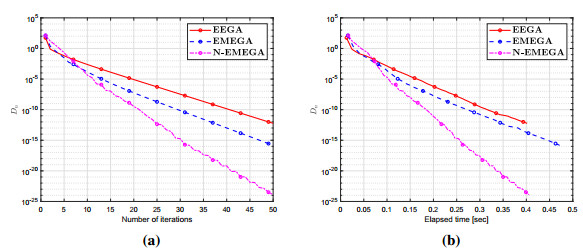
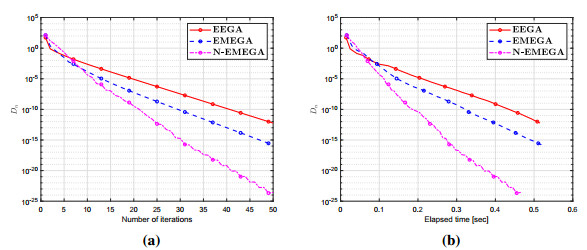
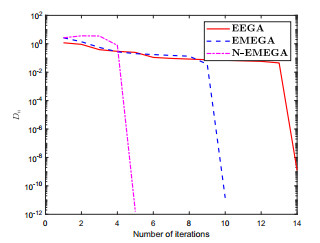
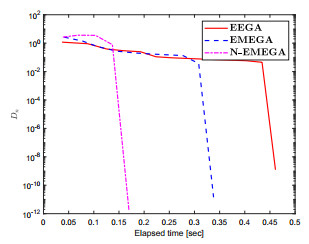
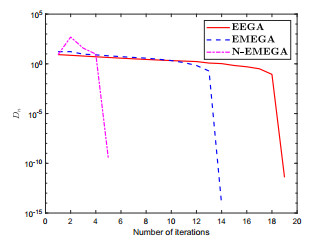
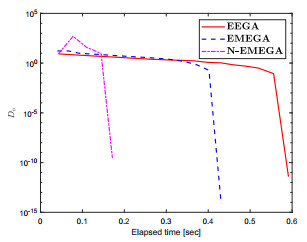
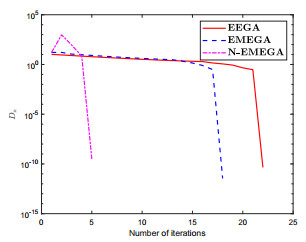
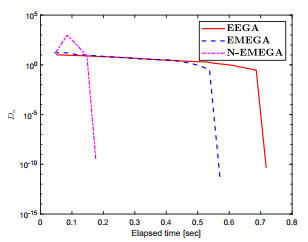


 DownLoad:
DownLoad: